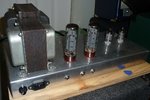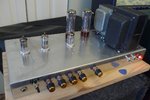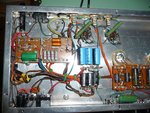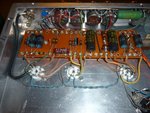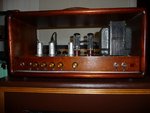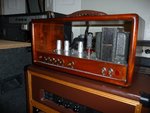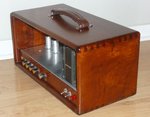Built one of those many moons ago.
Trainwrecks are all about EL34 distortion (power tube) in fact the power tubes start clipping heavily before the preamp does.
Basically in a nut shell a Train Wreck is basically a Fender preamp circuit with an extra cold gain stage run into a pair of mismatched EL34's which delivers tons of mid range and upper mid range. Real Trainwrecks run the plates around 400 -420 volts and are rated at 35 watts. The reason they clean up so well is because the power tubes are the majority of the distortion. To get a basic idea, dime the volume control on your amps and try and use the gain control to control volume, you will get the idea, but of course not the Trainwreck tone.

Typically in an EL34 amp running the plates from 400 to 460 volts, the power tubes when the speaker impedance is matched, want to see a primary resistance of 3.4 to 3.6K. On Train Wrecks, Ken used 6.6K primaries which is similar to plugging into a cab one step impedance higher. So in a Nut shell Train Wreck EL34's see impedance of 8,16,and 32 ohms when plugged into 4,8,16 ohm cabs. This results in a loss of power output (35 watts) but results in more mids and upper mid emphasis and harmonic overtones. Running power tubes in this type of mismatch can lead to issues with fly-back voltage spikes back to the OT and tubes. This is why Trainwrecks have 3 N147007 diodes in series from the plates to ground in the circuit. This results in 3000 volts flyback prevention diodes. Ampeg used these a lot in their designs, funny because Ken worked at Ampeg in his early years.
The 35 watt Trainwrecks seemed louder than they were because you are hearing all mids, and the human ear is most sensitive to mids. They are great for clean tones and dynamic lead playing, but don't work to well for modern rhythm playing.


